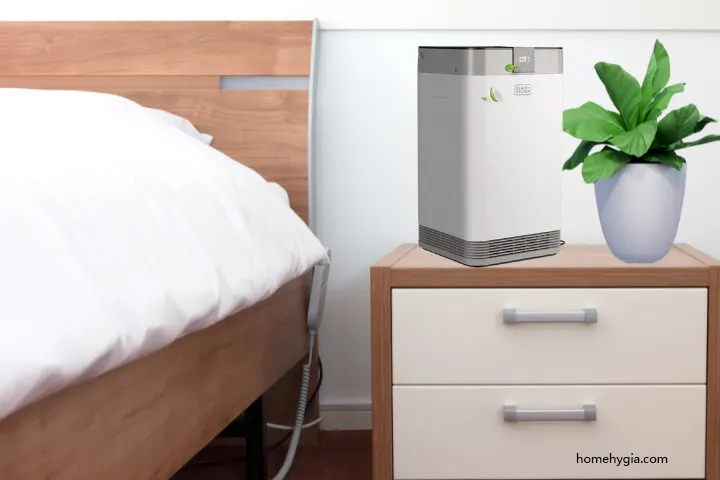What Are Electrostatic Air Purifiers?
Have you ever thought about how clean your home’s air really is? Dust, pollen, and smoke can all linger in the air we breathe. That’s where electrostatic air purifiers come in. These devices use special technology to clean the air and make your home feel fresher.
Unlike regular air purifiers with filters, these devices use electricity to trap particles in the air. They’re quiet, easy to use, and don’t need expensive filter replacements. But how do they really work? Let’s take a closer look.
How Do Electrostatic Air Purifiers Work?
The way these purifiers work is both smart and simple.
- Release of Negative Ions: The purifier sends out negatively charged ions into the air. These ions attach themselves to things like dust, pollen, and smoke.
- Attracting Particles: Once the particles have a charge, they are drawn to positively charged collection plates inside the purifier.
- Trapping Dirt: The plates hold the particles in place, leaving your air cleaner.
It’s like a magnetic trick! The particles stick to the plates instead of floating around your home.
Why People Like Electrostatic Air Purifiers
These purifiers have become popular for a few good reasons:
- Quiet Operation: Unlike purifiers with loud fans, these work silently. You can use them in your bedroom or office without distractions.
- No Filter Replacements: Instead of buying new filters, you just clean the collection plates. This saves money over time.
- Eco-Friendly: Reusable plates mean less waste, which is better for the environment.
But no product is perfect. Some models release ozone, which can irritate your lungs. Let’s talk about that next.
Do Electrostatic Air Purifiers Produce Ozone?
Here’s something to think about. Some electrostatic air purifiers create ozone as a byproduct. While ozone can help remove odors, it can also harm your health if levels are too high.
How to Stay Safe:
- Look for purifiers labeled as low-ozone or ozone-free.
- Use them in well-ventilated rooms to keep ozone levels low.
If you’re worried about ozone, there are other air purifiers that don’t produce it at all.
How Electrostatic Air Purifiers Compare to Others
Here’s a quick look at how these purifiers stack up against other types:
| Feature | Electrostatic Air Purifiers | HEPA Filters | Activated Carbon Filters |
| Noise Level | Silent | Moderate | Silent |
| Maintenance | Clean reusable plates | Replace filters | Replace filters |
| Cost Over Time | Low | Moderate | Moderate |
| Ozone Emission | Possible in some models | None | None |
Electrostatic air purifiers are great if you want a quiet, cost-effective option. But if you’re concerned about ultra-fine particles or ozone, HEPA or activated carbon filters might be better choices.
How They Work? Electrostatic air purifiers are a smart choice for improving air quality. They’re quiet, easy to maintain, and can save you money in the long run. However, it’s important to be aware of potential ozone emissions and their limitations in capturing very fine particles.
If you’re looking for cleaner air in your home or office, this could be a good place to start. In the next section, we’ll explore the benefits and drawbacks of electrostatic air purifiers to help you decide if they’re the right fit for your needs.
What Are the Benefits of Electrostatic Air Purifiers?

Electrostatic air purifiers have some great features that make them stand out. Here’s why people love them:
1. Quiet Performance
Nobody likes a noisy machine. These purifiers work silently, making them perfect for bedrooms, nurseries, and offices.
2. Cost-Effective
You don’t need to buy new filters. Just clean the collection plates, and you’re good to go! This saves money in the long run.
3. Easy to Maintain
Cleaning the plates is simple and doesn’t take much time. Plus, you don’t need to worry about running out of filters.
4. Eco-Friendly
Reusable plates mean less waste. If you care about the environment, this is a big plus!
5. Great for Larger Particles
Electrostatic purifiers are good at trapping bigger particles like dust and pet dander. This can help reduce allergies and keep your air feeling fresh.
What Are the Limitations of Electrostatic Air Purifiers?
While they have many benefits, there are some downsides to think about:
1. Ozone Production
Some models release ozone, which can irritate your lungs and worsen asthma. Always check for low-ozone certifications before buying.
2. Not as Good for Small Particles
Unlike HEPA filters, electrostatic purifiers don’t capture ultra-fine particles like bacteria or viruses.
3. Requires Regular Cleaning
If you don’t clean the plates often, the purifier won’t work as well. Dust buildup can reduce its efficiency.
Electrostatic Air Purifiers vs. HEPA Filters
Which is better: electrostatic purifiers or HEPA filters? Let’s compare:
| Feature | Electrostatic Air Purifiers | HEPA Filters |
| Noise Level | Silent | Moderate |
| Ultra-Fine Particle Removal | Limited | Excellent |
| Maintenance | Clean plates regularly | Replace filters |
| Ozone Risk | Possible in some models | None |
Verdict: If you want quiet operation and low costs, go with electrostatic. For better protection against small particles, HEPA is the way to go.
Where Do Electrostatic Air Purifiers Work Best?
These purifiers work great in certain situations:
- Homes with Allergies: Good for removing dust and pet dander.
- Small Offices: Quiet enough for focused work.
- Open Spaces: Effective in larger rooms with good airflow.
However, if you need to filter germs or odors, consider a different purifier type.
How to Choose the Best Electrostatic Air Purifier
Picking the right air purifier can feel overwhelming with so many options. But don’t worry! These tips will help you find the perfect purifier for your space.
1. Check the Size and Coverage Area
Before buying, think about the size of the room where you’ll use the purifier.
- For small bedrooms, look for purifiers that cover 100–200 square feet.
- For larger spaces like living rooms, choose models that handle 300+ square feet.
Tip: Most purifiers list their coverage area on the box or in the product details.
2. Look for Energy Efficiency
Nobody wants a device that raises their electricity bill. Look for purifiers with an Energy Star rating, which means they use less power. This can save you money over time and is better for the planet.
3. Consider Noise Levels
Do you need a purifier for your bedroom or office? If so, choose a model that runs quietly. Electrostatic air purifiers are usually silent, but it’s always good to check reviews or product specs.
4. Think About Maintenance
Electrostatic purifiers don’t use filters, so you don’t have to worry about buying replacements. Instead, they have collection plates that you clean yourself.
- Check how easy the plates are to remove and clean.
- Models with dishwasher-safe plates can save you time.
5. Ensure Safety from Ozone
Some purifiers produce ozone as a byproduct, which can irritate your lungs. To stay safe:
- Look for devices certified as low-ozone or ozone-free.
- Check reviews to see if users mention any ozone-related concerns.
Electrostatic Air Purifiers According to Coverage Area to Consider
Here are a few highly rated options to start with:
| Model | Coverage Area | Special Features | Price Range |
| Model A | 200 sq. ft. | Silent, compact, low-ozone | $100–$150 |
| Model B | 300 sq. ft. | Energy Star certified, dishwasher-safe plates | $150–$200 |
| Model C | 500 sq. ft. | Large room coverage, eco-friendly design | $200+ |
How to Maintain Your Air Purifier
Keeping your purifier clean is key to getting the best results. Here’s how to do it:
- Clean the Collection Plates: Wipe them down every 1–2 weeks. Some models let you wash the plates, which makes cleaning even easier.
- Check for Dust Buildup: If you notice less airflow, it might be time to clean the entire device.
- Follow the Manual: Every purifier is different, so always read the instructions for proper care.
Alternatives to Electrostatic Air Purifiers
If you’re unsure about an electrostatic air purifier, here are some other options to consider:
- HEPA Filters: Great for trapping tiny particles like pollen and bacteria.
- Activated Carbon Filters: Perfect for removing odors and harmful gases.
- UV-C Light Purifiers: Use ultraviolet light to kill germs and viruses.
Each type has its own strengths, so think about your specific needs before choosing.
FAQs
1. How do I know if an air purifier is right for my room size?
Look at the purifier’s coverage area. Choose one that matches or exceeds the size of your room.
2. Do electrostatic purifiers work for allergies?
Yes, they can help remove larger particles like dust and pet dander, which trigger allergies.
3. Are these purifiers safe for kids and pets?
Most are safe, but always check if the model produces ozone and ensure proper ventilation.
Conclusion
Choosing the right electrostatic air purifier doesn’t have to be complicated. By thinking about room size, energy efficiency, noise levels, and maintenance needs, you can find a purifier that fits your lifestyle.
Remember to prioritize low-ozone models for added safety and keep your purifier clean to ensure it works at its best. If you’re unsure, start with one of the top-rated options mentioned above or explore alternatives like HEPA and carbon filters.
Clean air is essential for a healthy life, and with the right purifier, you can enjoy a fresher, safer home every day.

